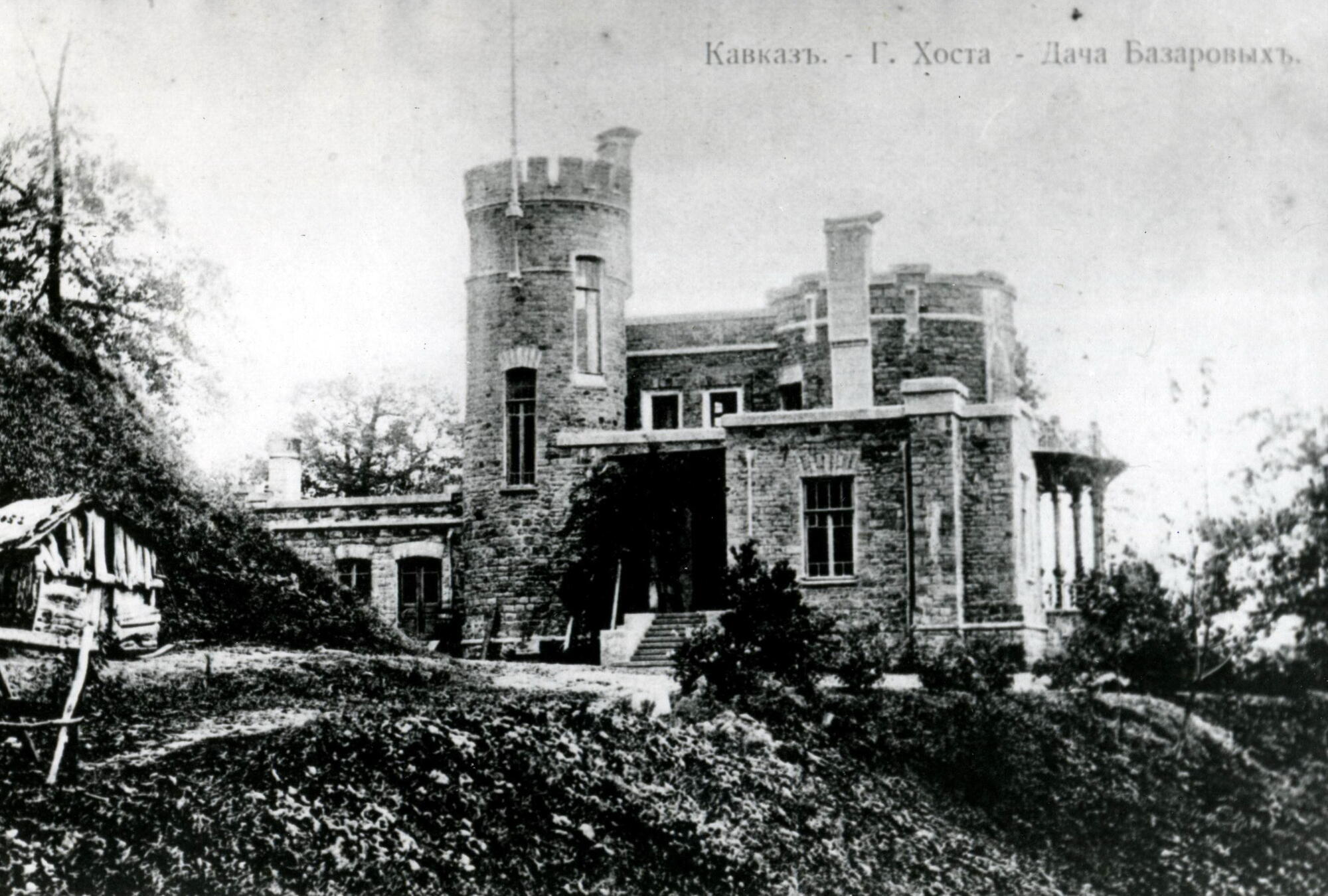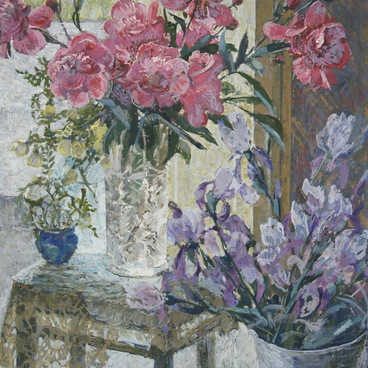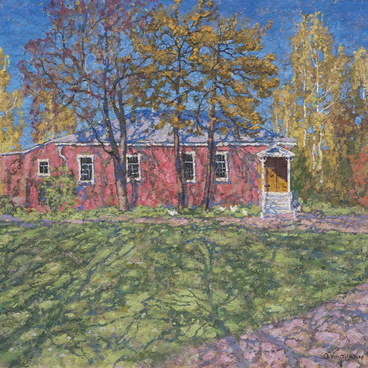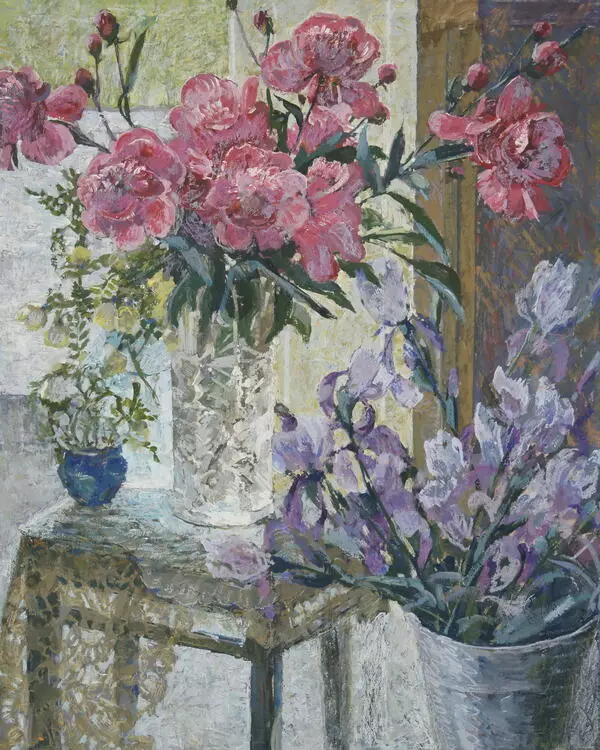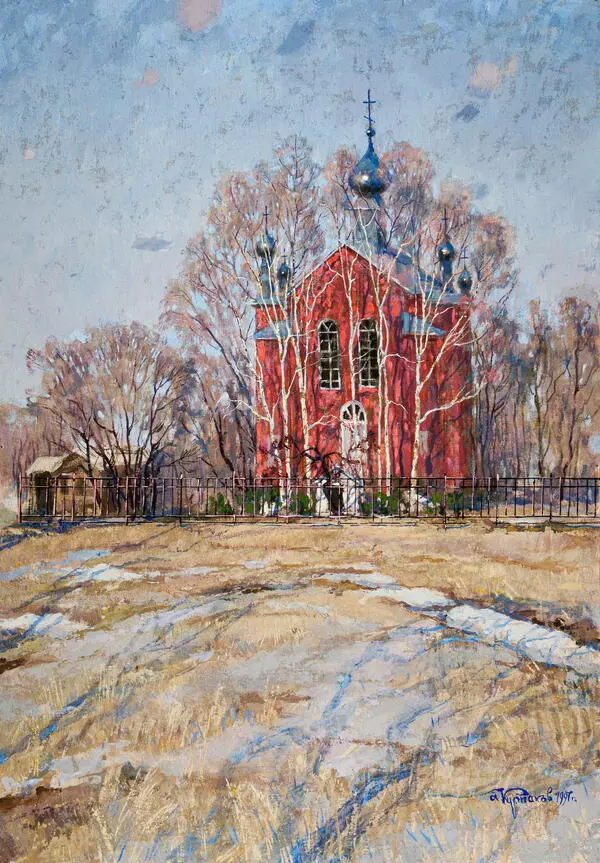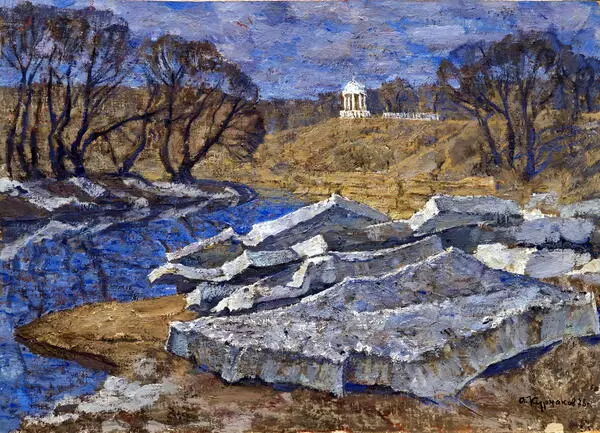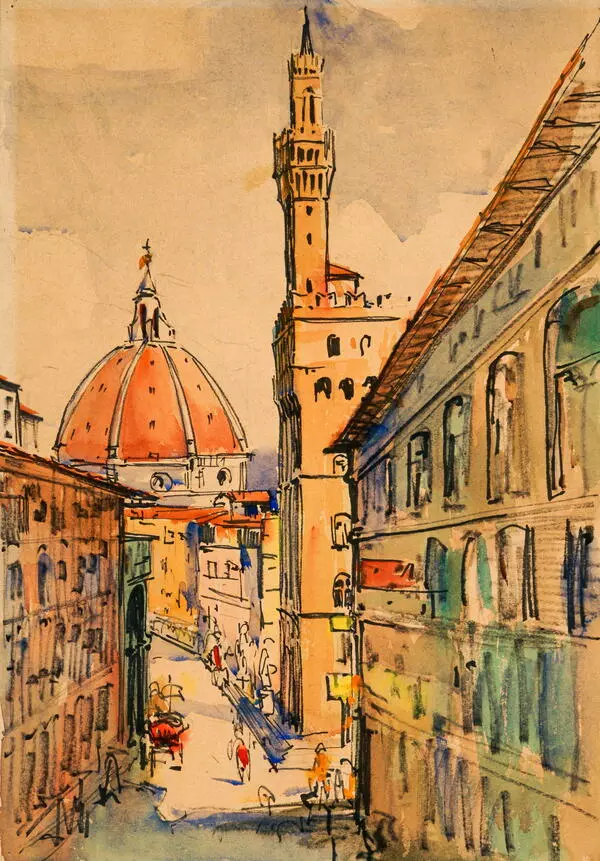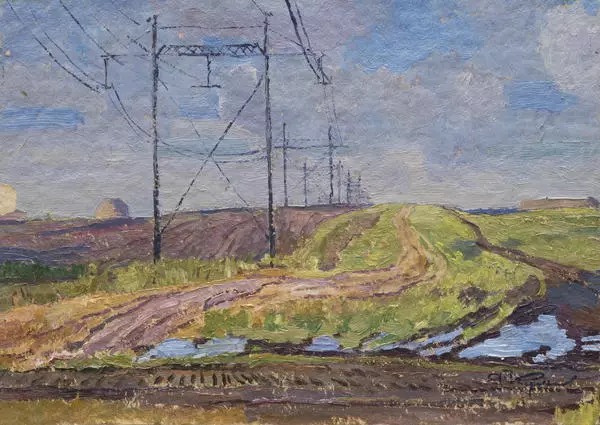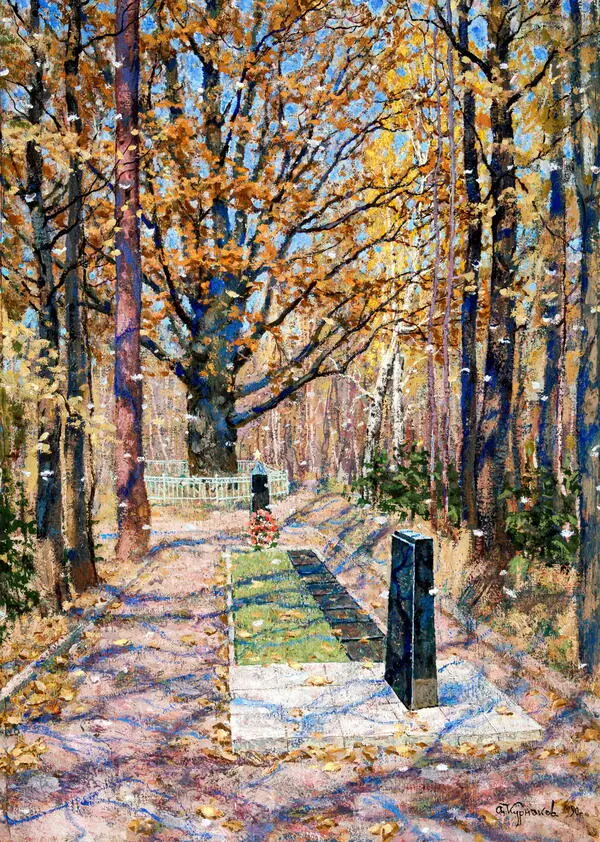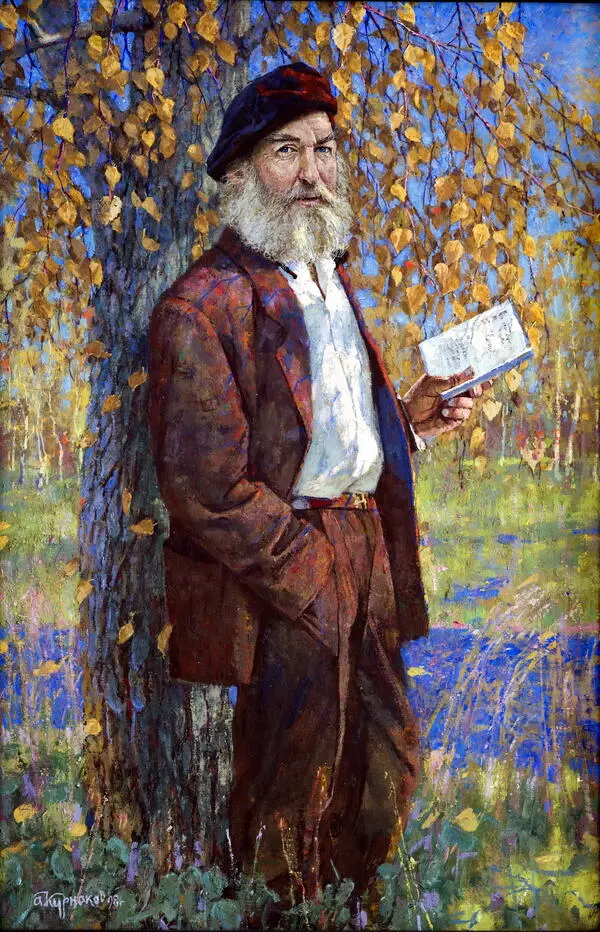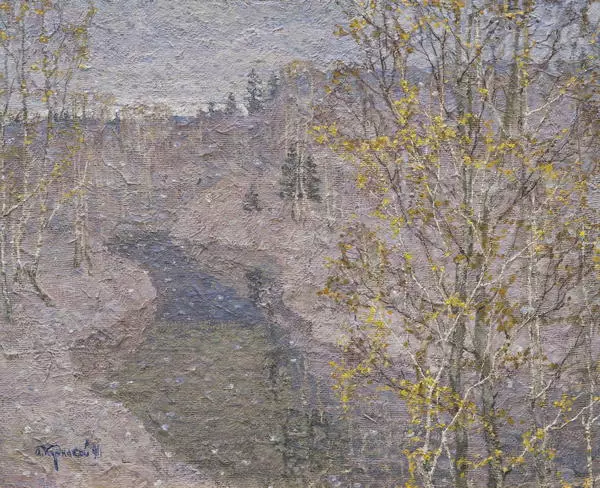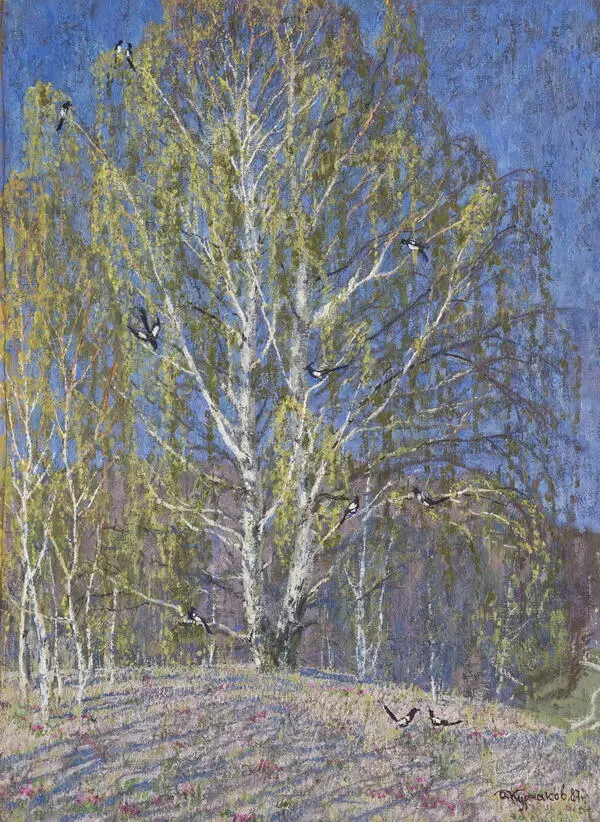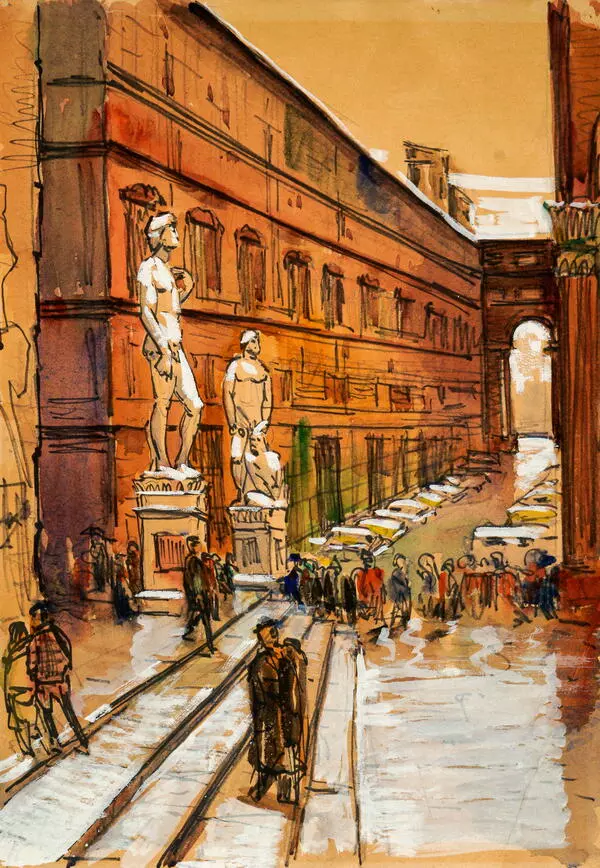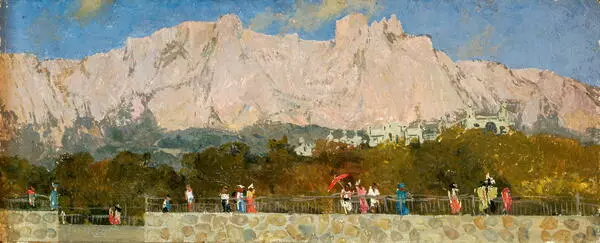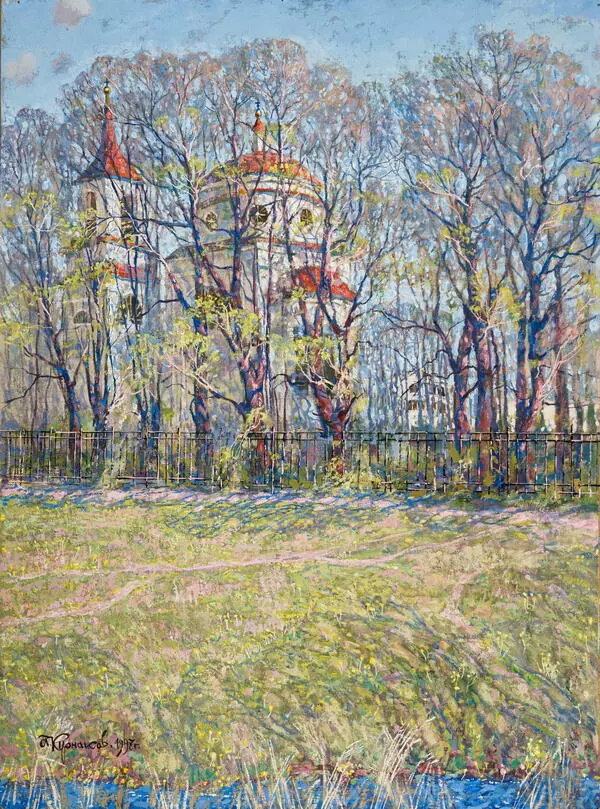In front of us is a seascape with architectural elements. It was created in 1947, when Andrei Ilyich Kurnakov had only the Oryol Art School and four years of war behind him, when there was no time for painting. But the seascape doesn’t look like a student’s work. Compositionally, it is built competently, all the details are thought out, you can feel the mood in it.
The day is rainy and gloomy. In the foreground is a gently sloping sea shore with gray and greenish pebbles. Waves roll over it, leaving a white foam. The sea is gray, greenish, with white choppy water. The artist paints grayish-yellowish spots where the shore shines through the water.
The sky in the background above is also gray, low, completely covered with dirty yellow clouds. Only a piece of blue sky breaks through the forest and mountains on the left. There is a ridge of hills overgrown with bushes between the sky and the sea on the horizon. The artist smothers them in a bluish haze.
In the middle on the left is a building with a tower. This is the House of Artists. The two-storey house was built at the beginning of the 20th century as a castle in the tradition of romanticism. A magnificent cast-iron terrace overlooked the sea, and a flagpole was attached to the top of the crenellated tower. Like other Sochi ‘castles’, the dacha was faced with stone. In 1911, the castle overlooking the Black Sea was acquired by the artist Nikolai Dubovskoy, who painted many of his canvases in Sochi. Professor of the landscape workshop of the Academy of Arts, Nikolai Nikanorovich liked to invite his pupils to his dacha, he held art lessons, teaching them how to work from nature. Over the years, this house turned into a creative workshop for artists. After the revolution, the building of the dacha housed the Rest House of the North Caucasus Military District. During the Great Patriotic War, hospitals were located here, and after the war - the Don sanatorium of the Don Military District. At present, Bazarov’s dacha belongs to the Aurora sanatorium of the Russian Defense Ministry.
Andrei Ilyich does not paint the fine details of the house; it is indicated by a light silhouette in the middle ground. But the tower of the castle attracts the artist’s attention with its romanticism, and he leaves it on the canvas. Behind the house, some small buildings with red roofs are highlighted in light spots. The artist also conventionally designates a pier that goes from the house into the sea and draws figures of people on it with small strokes. The red flag on the flagpole and red roofs are the only bright spots on the canvas.
The day is rainy and gloomy. In the foreground is a gently sloping sea shore with gray and greenish pebbles. Waves roll over it, leaving a white foam. The sea is gray, greenish, with white choppy water. The artist paints grayish-yellowish spots where the shore shines through the water.
The sky in the background above is also gray, low, completely covered with dirty yellow clouds. Only a piece of blue sky breaks through the forest and mountains on the left. There is a ridge of hills overgrown with bushes between the sky and the sea on the horizon. The artist smothers them in a bluish haze.
In the middle on the left is a building with a tower. This is the House of Artists. The two-storey house was built at the beginning of the 20th century as a castle in the tradition of romanticism. A magnificent cast-iron terrace overlooked the sea, and a flagpole was attached to the top of the crenellated tower. Like other Sochi ‘castles’, the dacha was faced with stone. In 1911, the castle overlooking the Black Sea was acquired by the artist Nikolai Dubovskoy, who painted many of his canvases in Sochi. Professor of the landscape workshop of the Academy of Arts, Nikolai Nikanorovich liked to invite his pupils to his dacha, he held art lessons, teaching them how to work from nature. Over the years, this house turned into a creative workshop for artists. After the revolution, the building of the dacha housed the Rest House of the North Caucasus Military District. During the Great Patriotic War, hospitals were located here, and after the war - the Don sanatorium of the Don Military District. At present, Bazarov’s dacha belongs to the Aurora sanatorium of the Russian Defense Ministry.
Andrei Ilyich does not paint the fine details of the house; it is indicated by a light silhouette in the middle ground. But the tower of the castle attracts the artist’s attention with its romanticism, and he leaves it on the canvas. Behind the house, some small buildings with red roofs are highlighted in light spots. The artist also conventionally designates a pier that goes from the house into the sea and draws figures of people on it with small strokes. The red flag on the flagpole and red roofs are the only bright spots on the canvas.
